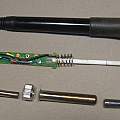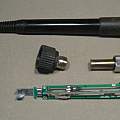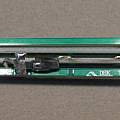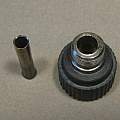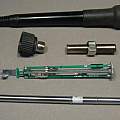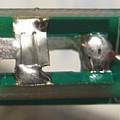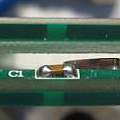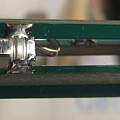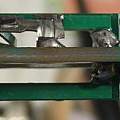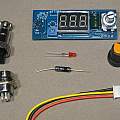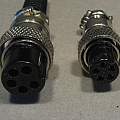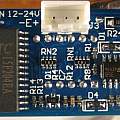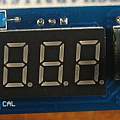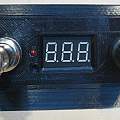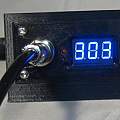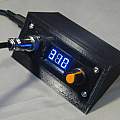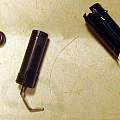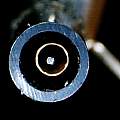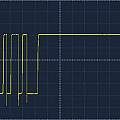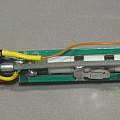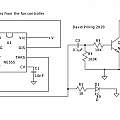Soldering - the T12 experience
Started 29th March 2018
Buying a temperature controlled soldering iron off ebay (see Solder for how I got here) I did not know the context - it was something cheap to play with. It turns out what I had was a Hakko 936 soldering station clone with a clone 907 handle. The Hakko bits are series T4 (or 900M). Eventually, understanding this, there's an issue around where does clone become fake (or industry standard) and how comfortable I'd be buying fake and how well copies perform compared to the original. Some of the clone irons (like mine) use a thermocouple instead of the original thermistor.
Later I saw T12 bits on ebay, these are combined bit and heater element. The promise is of better temperature control. Again T12 is a Hakko design but newer.
How to get into T12 soldering...
I bought "T12 Handle Core Bracket Solder DIY Soldering Station Kits Sleep Wake Switch Plug For Hakko 936 907 Solder Station Controller", the idea is one takes a 907 handle and inserts a new board which takes T12 bits. At the time of writing all that seems to be on offer for T12 are 907 style handles which can be converted. Oddly all the low cost T12 offerings need a soldering iron to assemble them.
Whilst the board fits nicely in the back of the handle, bits will get nowhere near it. I ended up putting a 6.5 mm drill through the front half of the handle to remove the narrow metal tube.
Pictures show the original 907 handle components. The modified version. T12 conversion board. 907 handle locking nut after being drilled out with removed tube. Complete T12 handle.
Unlike the 907 handle which uses 2 wires for power and 2 wires for sensing temperature, the T12 thermocouple is in series with the heater. The other 2 wires are used for a tilt switch which can be used to detect inactivity and power the iron off.
Connecting the wires:
Green Earth pin 1
Red +ve power pin 2
Yellow Switch pin 3 - +5V supplied via 10K pull up resistor
Blue Switch pin 4 - 0V
Black -ve power pin 5
Photos of connecting the wires inside the handle, red, green, black and (yellow and blue). Interestingly the earth cable has a capacitor connected in series between it and the tip.
To use the soldering iron one needs a controller, because it was cheap and easy, I bought one of the standard kits. This one is based around an STC micro-controller. The second photo shows the kit connector on the right compared with the normal 907 connector.
(Scant) instructions are available from http://files.banggood.com/2016/06/SKU650069usermanual.zip.
There are a few 3D print cases available, I used Case for soldering station with T12 tips. Photos of my print.
Power comes in from the left using a 5.5 mm barrel jack, which I connect to my bench power supply set to 24 V. Current gets around 2.5 A. Typical heating element resistance is 8 Ohms.
Control consists of a rotary encoder - which offers rotation and pressing.
Normally the display shows the iron temperature. Turning the encoder shows the target temperature for a few seconds.
A very short press, results in a display like 33.3 which changes rapidly and goes back to normal after a press or rotation. My guess is that this is the thermocouple voltage. On return to normal the temperature is slightly higher than it should be.
A medium length press, results in the iron going into standby mode - temperature falls to 200 °C, far right decimal point lights. Another press or rotate returns to normal mode. Activating the tilt switch also exits this state.
A long press, results in the iron going into menu or option mode. In this the display shows P00, P01, P02, P03...PNN. Presses whilst PNN is on display step to the next PNN. A pause shows the value for the PNN option. Rotate then allows the value to be changed, and press moves to the next PNN.
Postscript
I found the T12 iron better for lead free solder. But the tilt switch is irritating, it requires a soldering style that involves frequently pointing the iron tip at the ceiling. It should be a vibration sensitive switch. Both the controller kit and iron conversion kit came with a tilt switch. Note that tilt and vibration switches are different things, despite the efforts of ebay sellers to confuse them.
The switch that came with the kit was an SW200D tilt switch (datasheet). Since the iron typically is pointed down all the time the switch will always be in one state, one of the decimal points on the controller display indicates the switch state.
My first idea was to buy SW-18010P a commonly available vibration switch - turns out this switch is too big to fit in the front of the iron, where the switch usually goes, it can be fitted further back. Perhaps this reduces its effectiveness, however the main problem is that the controller software does not spot all switch events, presumably they are too fast.
At which point one starts to wail about the controller firmware not being open source, could I design my first 555 timer circuit...
However I have a good optical detector for "soldering iron on rest" - see Soldering Fume Extractor Fan control.
Postscript 20th March 2020
I put up with the iron turning off for a long time. I eventually got around to fixing the problem. Making the connections holding the vibration switch less rigid helped - disproving the idea that the pulses are too fast.
Photo 1 shows a disassembled vibration switch (strip off the plastic sleeve, pop off the end cap). Photo 2 is looking into the switch - a spring surrounding a pin. Photo 3 is the effect on the T12 controller pin 3 of movement (scope trace 100 µs by 1 V). Photo 4 is the more successful mounting.
I was still not happy and built this little circuit, input power is from my soldering fan which only turns on when the iron is off its rest and the output connects to the switch inputs on the T12 controller. A 555 timer generates a square wave with a period of around 1 second which is turned into a pulse to trigger the activity switch input on the controller.
David Pilling's Wiki
Set view
